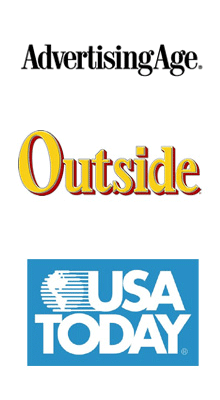Display + Search = Clicks – Before we dive into the numbers, realize that the results are from a company that sells display ads. The numbers are probably not skewed in their favor, but they do have an interest in display advertising.
With disclaimers out of the way, let’s get to the good stuff. According to a new study from Specific Media, utilizing comScore data, display ads increase the volume of searches for a specific product or company.
Display and search are directly correlated, judging by a Specific Media study of comScore data. Brand- and segment-related searches (for cars, automakers and vehicle classes) jumped by more than 100% in several categories after consumers were exposed to display ads for those brands.
Search clickers exposed to display advertising were 22% more likely to produce a sale than those who were not exposed, according to a September 2008 study of Microsoft’s Engagement Mapping system by Atlas Solutions.
In a ClickZ article, Microsoft’s Young-Bean Song said the study results suggested that search alone was not a cure-all for customer acquisition.
Clearly, the interesting stat for everyone reading the Travel 2.0 blog is the huge lift that display ads deliver to searches in the travel and tourism industry. Should this come as a surprise? Display ads have quickly become the online equivalent of a print campaign, providing a good opportunity for branding, but low results and CTRs. Until now data showing the effect of display on search was not clear, although most assumed a correlation was probable.
As for all of those articles and discussions about the death of the display ad, it appears that the display ad is still just as healthy as it’s printed brother. When used and measured correctly (engagement!), the display is still an important piece of an overall interactive marketing campaign.
And, apparently, it drives searches in the travel space.
http://www.emarketer.com/
Email – Shocker! Old people like phones and email. Young punks like text and social sites.
Personally, the stats about the boomer generation and communication preferences are not surprising. What is surprising is the realization that the younger demographics…Gen X, Gen Y, Millennials, whatever…are rapidly changing their communication habits. We have heard these stats before and even discussed them on the blog, however seeing charts such as this one should cause one to pause. Look at the drop off in email usage from 25-34 to 15-17, nearly half in a span of 10 years.
http://www.emarketer.com/
Congrats Online Users, You Are Smart(er)! – For years, digital marketers had to keep track of broadband penetration rates, browsers used, and other signs that campaign messages would reach their intended targets. Now it’s largely taken for granted that most Internet users will be able to watch an online video, forward a link, or otherwise perform the tasks required in the average digital campaign.
Apps: The Newest Brand Graveyard – Ah, the promise of Facebook and all it’s possible applications. Let’s do the math, Facebook has 130 million users + a cool app = success! If only it were that easy.
…Nike global director of digital media Stefan Olander explained how the brand saw its mission as building community through applications. He highlighted a new initiative: the Ballers Network, a robust Facebook application built by digital shop R/GA for basketball players to find games and manage leagues. On its Web site, Nike promises it will “revolutionize the way players around the world connect online and compete on the court.”
Six months later, Nike is confronting a dilemma familiar to many brands that charged headlong onto Facebook: very few people use Ballers Network. Despite its global ambitions and support in three languages, the application has a mere 3,400 users per month. According to Nike, it’s still testing the application.
3,400 is a pretty small number and if my calculations are correct, only about 0.002615% of Facebook users interact with the app. What happened? How does an organization such as Nike, clearly one of the leaders in the social media marketing (and marketing in general) field fail to take advantage of 130 million people on a social network?
The theory is that branded applications are, well, too branded and too complex for daily use.
“It’s pretty clear building [brand] applications isn’t working.”
Application experts pointed to several other reasons so many top brands have fallen short. In some cases, they said, brand apps are too complicated. Some provide little worthwhile interactivity and are overly branded.
“Marketers want to build something that’s product and marketing first,” he said. “The developer wants to provide utility, functionality and better someone’s life.”
Marketers have an agenda, a goal, a target, while developers are simply trying to make something easier for the end-user. So far, those two factors do not mix well…regardless of how many people are using a social network.
http://www.adweek.com/














